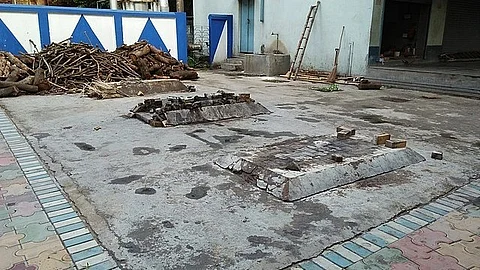

In Nagpur, the rise in levels of air pollution caused by crematoriums impacts the health of the residents in the city. According to CFSD (Centre for Sustainable Development), 60% of crematoriums in the city lack chimneys, leading to air pollution in the residential areas of the city.
Buddhe, the Director of CFSD, said that according to the study, around 77% of residents are living around 500 meters from the crematorium, and schools and hospitals are located 1 km from the crematorium, which poses a great risk to children and elderly people.
People in the residential area reported health issues like burning of the eyes, irritation of the throat, and continuous coughing due to the polluted air from the crematorium.
A health survey has been advised by CFSD to collect information about the health status of the 815 residents living near the crematorium.
The city also received sufficient funds from the central government to improve the air quality. According to the NMC executive engineer, NMC works on providing chimneys to the crematorium in a phase-wise manner, in which Rs. 1.6 crore will be spent for crematoriums in Mokshadham, Gangabai, and Manewada under phase 1.
In the city, 19 crematoriums were audited by CFSD, out of which 8 had chimneys; of those, only 5 were operational.
The civic bodies are ordered by CFSD to restore the non-functional chimneys and immediately provide new chimneys to the crematorium, which doesn’t have chimneys. Further research is done to compare the efficiency between wood and briquettes from agricultural waste.
The CFSD recommends installing electrostatic precipitator devices to filter air in chimneys and also developing green buffers to avoid air pollution.
The efficacy of wood and agricultural waste briquettes is compared by CFSD, and it is found that briquettes are more efficacious and comparatively cost less than wood.
Each crematorium uses 300 kg of wood, and only 6 of the crematoriums use eco-friendly materials like briquettes as fuel. Other crematories are advised to replace the use of wood with briquettes from agricultural waste, as it is more eco-friendly.
(Input from various media sources)
(Rehash/Rohini Devi)
